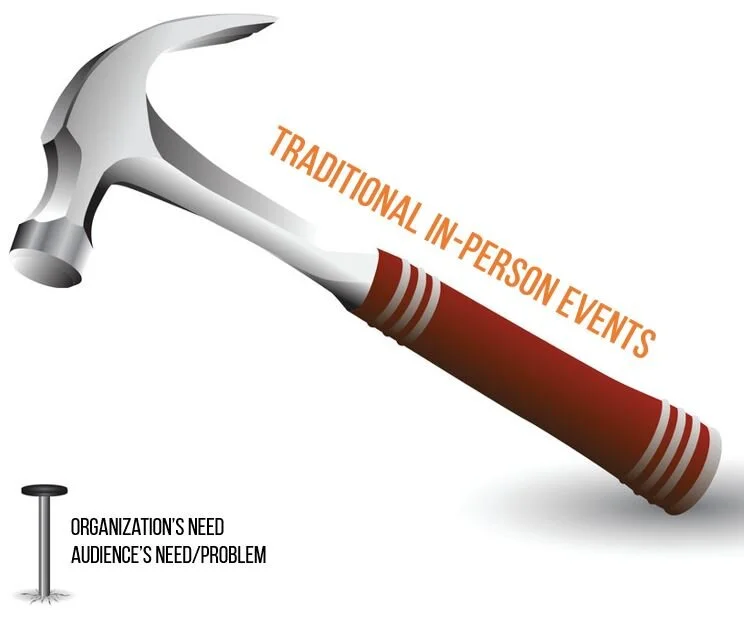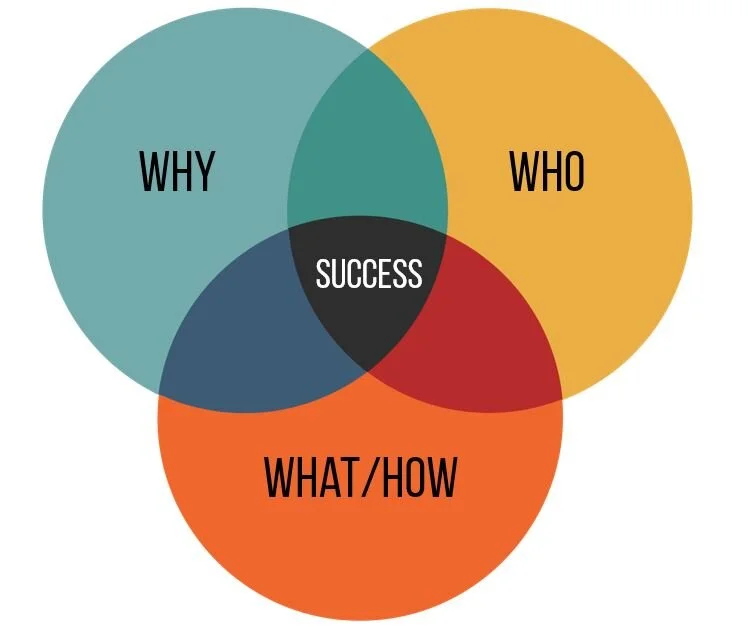This is a phrase that I have been sharing with my clients for the last month. “When all you have is a hammer, everything looks like a nail.” In this analogy, traditional in-person events are the hammer. Events were the tool that we would use to solve the pain of our attendees or meet the needs of the organization (the nail). Previously, we would see a need and use an event to solve that problem. In some cases, we got very good at using this tool. In some cases, we grew lazy. We would use the same tool repeatedly. We would get frustrated that we were getting the same results time after time.
The situation that we find ourselves in is extraordinary. Our situation requires us to use a new tool. The need or problem that we are solving for still needs a solution. Our organization still needs funding, we still need engagement, we still need volunteers, we still need profit. Our attendees still need connection, they still need education, they still want to achieve their goals, they still want to tell themselves a story. The use of our traditional tool is no longer effective, enough, or in some cases, legal. It’s hard to plan an event when they are banned.
So, what do we do now? If we can’t use a hammer, how do we meet the need? We must do a couple of things to make sure that we can move forward.
1. Take a hard and honest look at the nail. Make sure that it is in fact a nail and a hammer was the most effective tool. Screws and nails can look similar to each other. You may have been using a hammer on a screw all along. We replaced a few boards on our porch last week. There were a few times where I tried unscrewing a nail. It didn’t’ work well. Through this process, we may find that the nail isn’t actually a nail!
The best way to make sure you are using the right tool is to define outcomes and objectives. What is the desired result of the campaign, event, program, engagement activity, email, etc. Define the change you want to see in your audience or attendee. Understand their need, problem, and pain and create a solution for that problem. Love your audience, not your product!
2. Find a new tool! Look in your toolbox and see if you have an existing tool you can use to accomplish the job. Ask friends what tools they are using. See what other industry leaders are doing, and see if that is right for you. You may not have the tool you need, you might need to rent or buy a new one. You may need to learn how to use a new tool. Learning to use a new tool can be frustrating, but it can be a lot more effective than using a hammer to nail in a screw.
My encouragement to you is this, you can pivot, you can innovate. You can do it because you need to! Now isn’t the time to stick to our old ways, hunker down, and wait for life to get back to “normal”. We need to take a hard look at the need, the pain or the problem, and use the right tool to solve for that. I have been very active in a lot of different event planning groups lately. I see a lot of people explaining “how” to do things.
How to use zoom
How to change your fundraiser into the virtual fundraiser
How to get register people for a virtual event.
These are great conversations to have and I am grateful that people are putting together these tools. I just want to make sure we don’t jump into reading the “manual” for our new tool before making sure we are using the right tool. Understanding how to use a power screwdriver does you no good if you need to put in a staple.
Most of our time needs to be poured into defining our “why” and our “who”. The “what and how” will follow. We need to take a look at our organization and ask what is most important right now? We need to look at our audience and discover what they need right now. Only after we have looked at the organization and our audience can and should we dive into the what and how.



